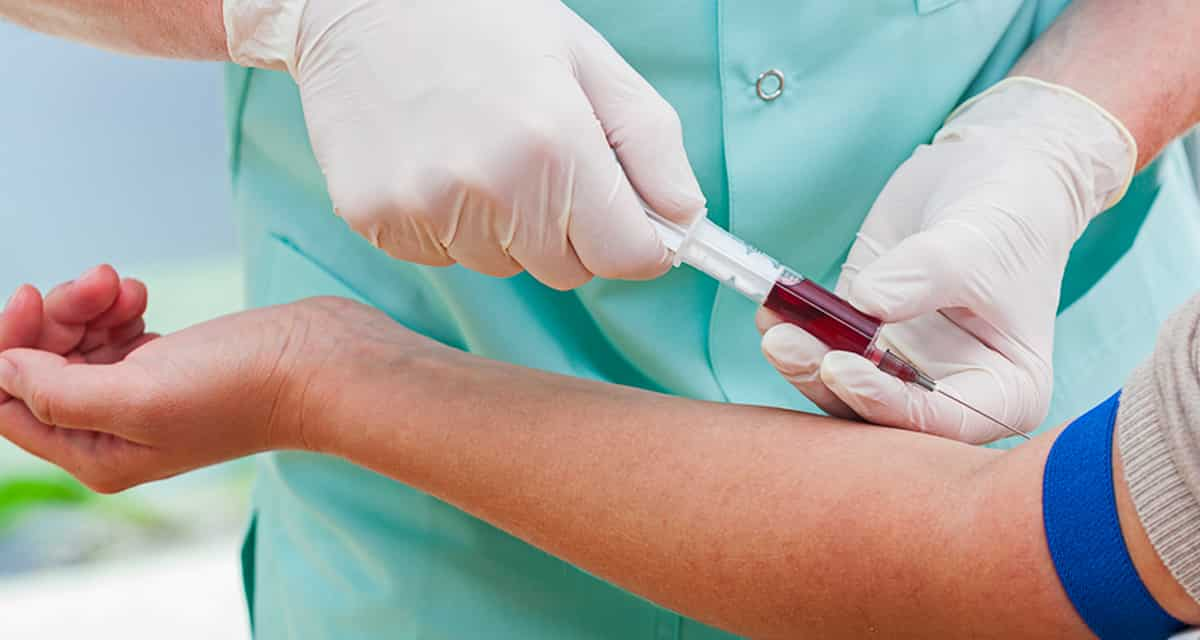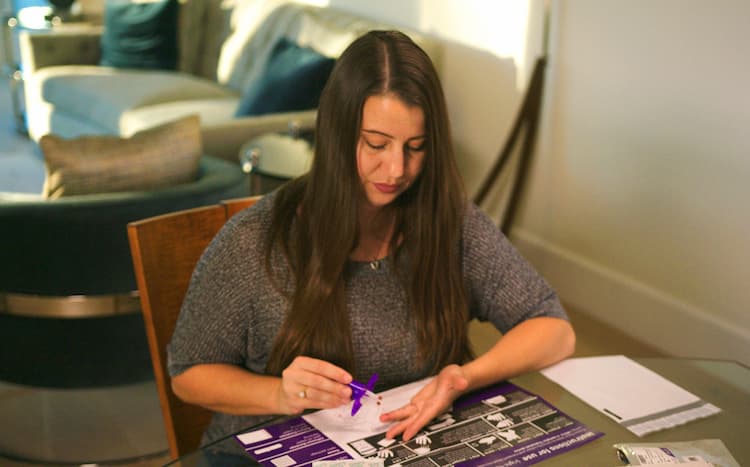Share this
blood tests are critical to immunosuppressive therapy
by Neoteryx Microsampling on Aug 17, 2020 9:00:00 AM
The human immune system is conditioned to attack anything it identifies as "foreign." When a patient receives an organ transplant, their immune system typically identifies the new organ as foreign, and will reject it. Immunosuppressive therapy is prescribed to organ transplant patients to reduce this risk.
These drugs suppress the body’s natural immune response. Therefore, organ transplantation is followed by immunosuppressive therapy that lasts a lifetime. Immunosuppressive drug treatment ensures organ survival by minimizing the chances of the patient's body rejecting it.
Immunosuppressives are also prescribed for patients with certain autoimmune disorders, and other conditions that trigger an overactive immune system response.
Immunosuppressive drugs need constant monitoring to help the care team avoid administering doses that are too high or too low. High doses can be toxic, leading to side effects and complications.
Small doses can increase the risk of organ rejection. Therapeutic drug monitoring (TDM) plays a pivotal role in the management of immunosuppressive therapy, ensuring that the right drug concentrations are achieved and maintained for each individual patient.
TDM usually involves drawing whole blood, plasma, or serum samples and testing them at regular intervals to assess drug concentration levels in the bloodstream. TDM helps physicians adjust dosages and individualize a therapeutic regimen for each unique patient. Frequent blood testing and analysis help the care team identify and track any inter-individual variations between the dose and its effect.
If a patient exhibits significant pharmacokinetic variation, the drug dosage may need to be adjusted. This can be challenging. Certain immunosuppressive drugs have a narrow target range and high intra- and inter-subject variability. These drugs include mycophenolic acid, cyclosporine, tacrolimus, sirolimus, everolimus, and prednisolone. Routine blood testing at regular intervals for TDM is critical for patients taking these medications.
TDM Can Be Burdensome for Patients
For immunosuppressive drug monitoring, blood samples have traditionally been obtained through venipuncture blood draws in the clinic or lab. This method has presented challenges and limitations, the most notable being the invasive nature of the sample collection. Many patients find it stressful and painful to have blood drawn from a vein in their arm. What’s more, since TDM for many patients is ongoing, they need to visit the clinic frequently to undergo this phlebotomy procedure. This can mean frequent travel and many days of missed school or work, and a lot of stress.
Remote, Patient-Friendly Blood Collection Is a Game-Changer
Remote blood sample collection methods have been developed to minimize patient discomfort and inconvenience. Remote blood sampling can be performed by patients at home, and involves the collection of small capillary blood samples from a fingertip. Remote samples can be mailed to a lab for testing.
Improvements in molecular analysis have reduced the need for collecting large blood samples in tubes for TDM. Sample sizes 100 uL can be used for analysis. Smaller samples address the limitations in conventional techniques by enhancing the potential for fast, cost-effective, and less-invasive collection procedures.
The advantages of patient-centric, remote blood sampling reach beyond therapeutic drug monitoring. Frequent and large-volume blood sampling is uncomfortable for most patients, especially those with chronic illnesses that require regular blood draws. Remote blood sampling enables remote patient monitoring of people living with liver disease, diabetes, cancer, and other conditions.
Volumetric absorptive microsampling technology is the novel remote blood-sampling approach proving most effective in collecting blood samples at home, especially for patients undergoing immunosuppressive therapy. The technique involves using a Mitra®device with an absorptive VAMS® tip to collect small, precise blood volumes. The patient uses a simple finger-stick method to draw a drop of capillary blood from the fingertip and absorb it onto the Mitra.

The blood samples dry right on the VAMS tip of the Mitra device, and are sent to the lab for analysis as a dried blood sample. VAMS is fast, cost-effective, and improves reliability because it provides fixed volumes of blood for accurate analysis. Patients don’t need to visit the clinic for blood draws; the method promotes self-sampling with minimal training.
At-home kits like the Mitra® Collection Kit include the Mitra microsampler, lancets, bandages, gauze, desiccant, a foil pouch and shipping envelope, and easy instructions for use. At-home sampling means that patients no longer need to disrupt their routines to visit clinics for painful blood draws. Their care team must order a Mitra blood collection kit that can be shipped to patients at their home address.
This remote blood sampling method is suitable for patients undergoing immunosuppressive therapy for conditions such as ulcerative colitis, autoimmune diseases (Crohn’s disease, psoriasis, multiple sclerosis), organ transplants, and vasculitis, among others.
Share this
- Microsampling (206)
- Research, Remote Research (119)
- Venipuncture Alternative (105)
- Clinical Trials, Clinical Research (83)
- Mitra® Device (73)
- Therapeutic Drug Monitoring, TDM (51)
- Dried Blood Spot, DBS (39)
- Biomonitoring, Health, Wellness (30)
- Infectious Disease, Vaccines, COVID-19 (24)
- Blood Microsampling, Serology (23)
- Omics, Multi-Omics (21)
- Decentralized Clinical Trial (DCT) (20)
- Specimen Collection (18)
- Toxicology, Doping, Drug/Alcohol Monitoring, PEth (17)
- Skin Microsampling, Microbiopsy (14)
- hemaPEN® Device (13)
- Preclinical Research, Animal Studies (12)
- Pharmaceuticals, Drug Development (9)
- Harpera Device (7)
- Industry News, Microsampling News (5)
- Antibodies, MAbs (3)
- Company Press Release, Product Press Release (3)
- Environmental Toxins, Exposures (1)
- July 2025 (1)
- May 2025 (1)
- April 2025 (2)
- December 2024 (2)
- November 2024 (1)
- October 2024 (3)
- September 2024 (1)
- June 2024 (1)
- May 2024 (1)
- April 2024 (4)
- March 2024 (1)
- February 2024 (2)
- January 2024 (4)
- December 2023 (3)
- November 2023 (3)
- October 2023 (3)
- September 2023 (3)
- July 2023 (3)
- June 2023 (2)
- April 2023 (2)
- March 2023 (2)
- February 2023 (2)
- January 2023 (3)
- December 2022 (2)
- November 2022 (3)
- October 2022 (4)
- September 2022 (3)
- August 2022 (5)
- July 2022 (2)
- June 2022 (2)
- May 2022 (4)
- April 2022 (3)
- March 2022 (3)
- February 2022 (4)
- January 2022 (5)
- December 2021 (3)
- November 2021 (5)
- October 2021 (3)
- September 2021 (3)
- August 2021 (4)
- July 2021 (4)
- June 2021 (4)
- May 2021 (4)
- April 2021 (3)
- March 2021 (5)
- February 2021 (4)
- January 2021 (4)
- December 2020 (3)
- November 2020 (5)
- October 2020 (4)
- September 2020 (3)
- August 2020 (3)
- July 2020 (6)
- June 2020 (4)
- May 2020 (4)
- April 2020 (3)
- March 2020 (6)
- February 2020 (3)
- January 2020 (4)
- December 2019 (5)
- November 2019 (4)
- October 2019 (2)
- September 2019 (4)
- August 2019 (4)
- July 2019 (3)
- June 2019 (7)
- May 2019 (6)
- April 2019 (5)
- March 2019 (6)
- February 2019 (5)
- January 2019 (8)
- December 2018 (3)
- November 2018 (4)
- October 2018 (7)
- September 2018 (6)
- August 2018 (5)
- July 2018 (8)
- June 2018 (6)
- May 2018 (5)
- April 2018 (6)
- March 2018 (4)
- February 2018 (6)
- January 2018 (4)
- December 2017 (2)
- November 2017 (3)
- October 2017 (2)
- September 2017 (4)
- August 2017 (2)
- July 2017 (4)
- June 2017 (5)
- May 2017 (6)
- April 2017 (6)
- March 2017 (5)
- February 2017 (4)
- January 2017 (1)
- July 2016 (3)
- May 2016 (1)
- April 2016 (2)



No Comments Yet
Let us know what you think